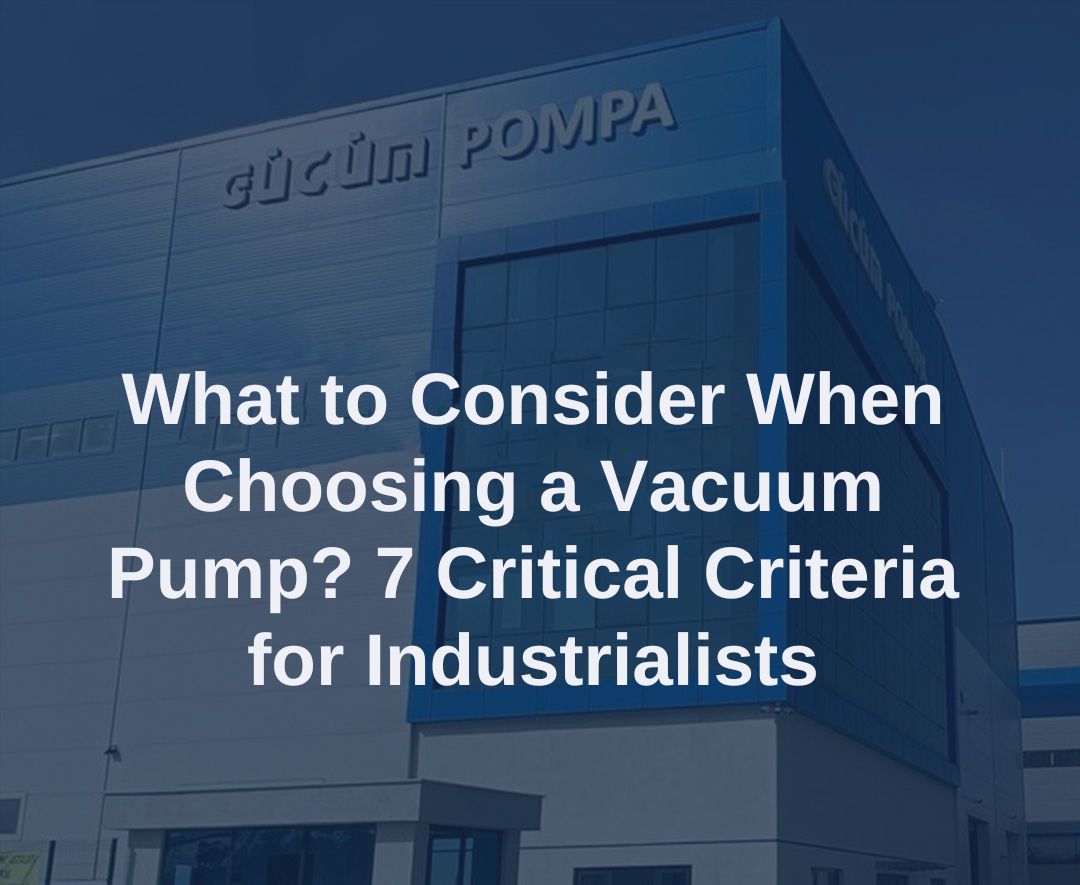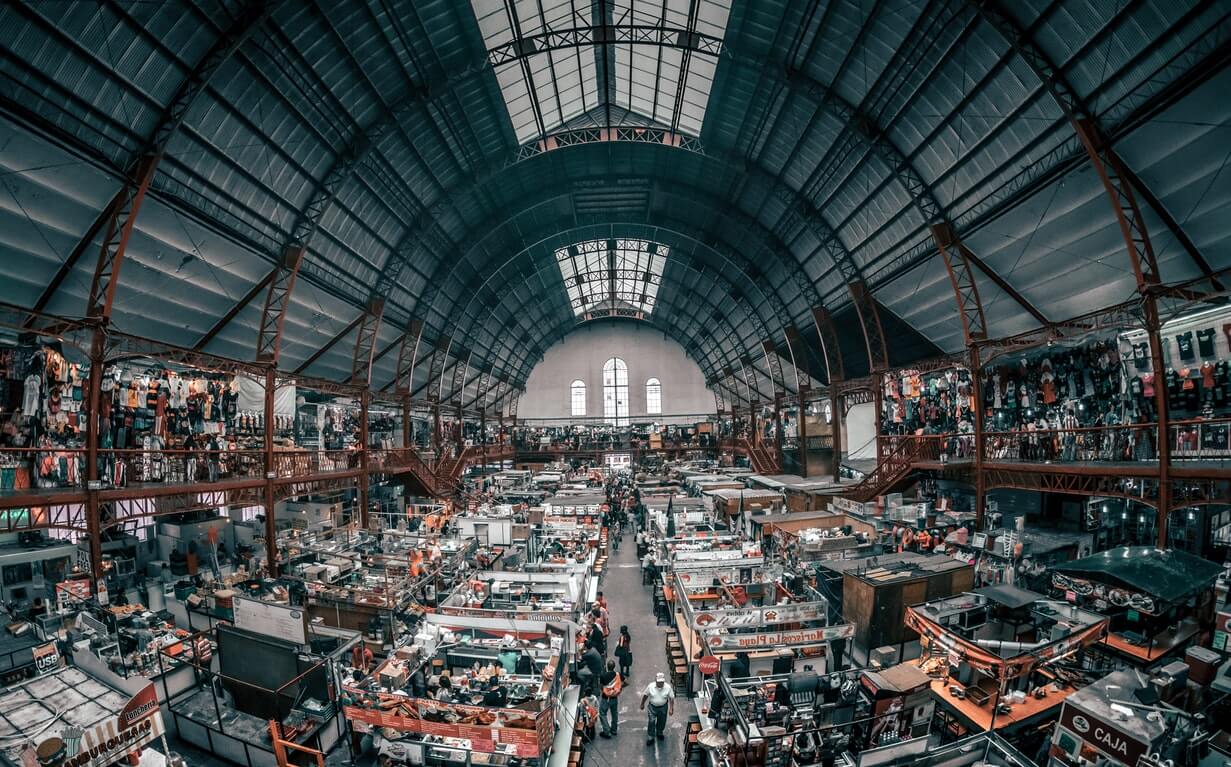What to Consider When Choosing a Vacuum Pump? 7 Critical Criteria for Industrialists
What to Consider When Choosing a Vacuum Pump? Critical Criteria for Industrialists
Vacuum Level Suitable for the Application
In industrial environments, the selection of a vacuum pump should be made by considering the vacuum level required by the application. Each process requires a different pressure range. For example, a low vacuum level may be sufficient for processes like food packaging, while sensitive applications such as semiconductor manufacturing or chemical analysis demand high vacuum levels. The technical specifications of the pump must meet the application's requirements. Choosing an incorrect vacuum level can reduce process efficiency and negatively impact product quality. Therefore, the maximum vacuum level the pump can achieve and the application's needs should be thoroughly analyzed. For instance, pumps used in microelectronics production must be capable of reaching ultra-high vacuum (UHV) levels.
Pump Type and Technology
Vacuum pumps have different technologies, each designed for specific applications. Common pump types include rotary vane pumps, liquid ring pumps, dry pumps, and turbomolecular pumps. Rotary vane pumps operate with oil and are suitable for general industrial applications. However, in environments where chemical substances are used, dry pumps are preferred because their oil-free operation reduces contamination risks. Liquid ring pumps are effective in processes involving moisture or chemical vapors. The choice of pump type depends on the chemical and physical conditions of the application. An incorrect selection can lead to system failures or increased maintenance costs.
Energy Efficiency
In industrial facilities, energy costs constitute a significant portion of the operating budget. Therefore, selecting a vacuum pump with high energy efficiency provides long-term cost savings. Pumps equipped with Variable Speed Drive (VSD) technology adjust their speed according to process needs, preventing unnecessary energy consumption. This reduces operating costs and contributes to environmental sustainability goals. When choosing a pump, energy consumption values and performance coefficients (e.g., power input and output ratios) should be carefully examined. Energy-efficient pumps offer economic advantages in long-term use.

Material Quality and Durability
The material quality of vacuum pumps is critical for service life and durability. In environments with corrosive gases or chemicals, the pump must be made of corrosion-resistant materials. Stainless steel or specially coated materials extend the pump’s lifespan and reduce maintenance costs. In industries like food production, where hygiene standards are critical, pumps must be made from suitable materials. Environmental conditions such as temperature, humidity, and chemical exposure should be considered during material selection.
Maintenance Ease and Service Support
In demanding industrial environments, vacuum pumps operate continuously and require regular maintenance. Pumps offering maintenance ease are essential for operational continuity. Oil-free dry pumps require less maintenance by reducing contamination risks. Additionally, the manufacturer’s service support and spare parts availability ensure uninterrupted production during breakdowns. When selecting a pump, the manufacturer’s service network and technical support response time should be evaluated. Easily accessible spare parts streamline maintenance processes.
Noise Level and Working Environment
Vacuum pumps, especially high-capacity models, can generate noise during operation. For employee comfort and safety, low-noise-level pumps should be preferred. Noise can affect employee productivity during prolonged operations. Centralized vacuum systems reduce heat and noise in the production area, creating a safer working environment. When selecting a pump, noise levels (in decibels) and suitability for the working environment should be checked.
Space and Installation Ease
Space in industrial facilities is often limited. Therefore, when choosing a vacuum pump, its dimensions and installation ease should be considered. Compact and portable models save space and simplify installation processes. The pump’s integration with existing systems should be seamless and efficient. Easy installation enhances operational continuity and reduces setup costs. Additionally, the pump’s design should facilitate easy maintenance and repairs.
Choosing the right vacuum pump for industrial applications significantly impacts a company’s efficiency, costs, and production quality. Criteria such as vacuum level, pump type, energy efficiency, material quality, maintenance ease, noise level, and installation ease play a decisive role in the selection process. Industrialists should carefully evaluate these factors to select a pump suitable for short- and long-term needs. The right choice reduces operating costs, optimizes production processes, and provides a competitive advantage. The manufacturer’s technical support and industry experience should not be overlooked during the selection process.
Compatibility and Integration in Industrial Applications
In industrial facilities, the selection of a vacuum pump should be carefully evaluated in terms of compatibility and ease of integration with existing systems. The pump’s technical specifications must align with the facility’s infrastructure to ensure seamless operation with other equipment in the production line. For example, if a vacuum system is connected to a central control unit, the pump’s communication protocols and connection points must match the system. Additionally, the pump’s dimensions and placement requirements should suit the facility’s physical space. Compact vacuum pumps offer advantages in limited spaces and speed up installation processes. During integration, the pump’s compatibility with existing piping systems and other equipment is crucial. For instance, pumps used in the food industry require connection components compliant with hygiene standards. An incorrect selection can lead to system incompatibilities and production interruptions. Therefore, the facility’s technical infrastructure should be thoroughly analyzed before selecting a pump, and compatibility should be discussed with the manufacturer. For long-term performance, the pump’s synchronized operation with other systems is critical.
Cost and Return on Investment
For industrialists, vacuum pump selection should be evaluated not only based on initial cost but also on long-term return on investment (ROI). A high-quality pump may have a higher upfront cost, but its energy efficiency, low maintenance costs, and long service life reduce the total cost of ownership. For example, variable speed pumps optimize energy consumption based on process needs, reducing operating expenses. Additionally, the pump’s durability and resistance to corrosion eliminate the need for frequent replacements or repairs. In cost analysis, the manufacturer’s warranty period and service support should also be considered. A reliable service network ensures quick intervention during breakdowns, minimizing production losses. When selecting a pump, factors such as maintenance, energy consumption, and spare parts costs should be considered alongside the purchase price. This approach enhances long-term profitability and provides a competitive advantage.


